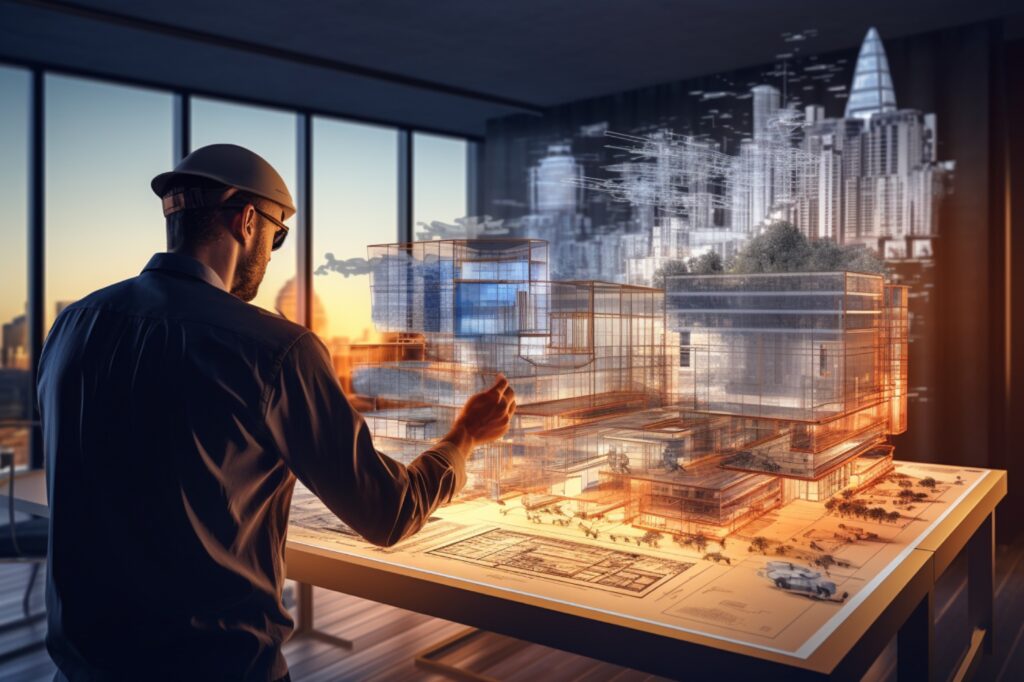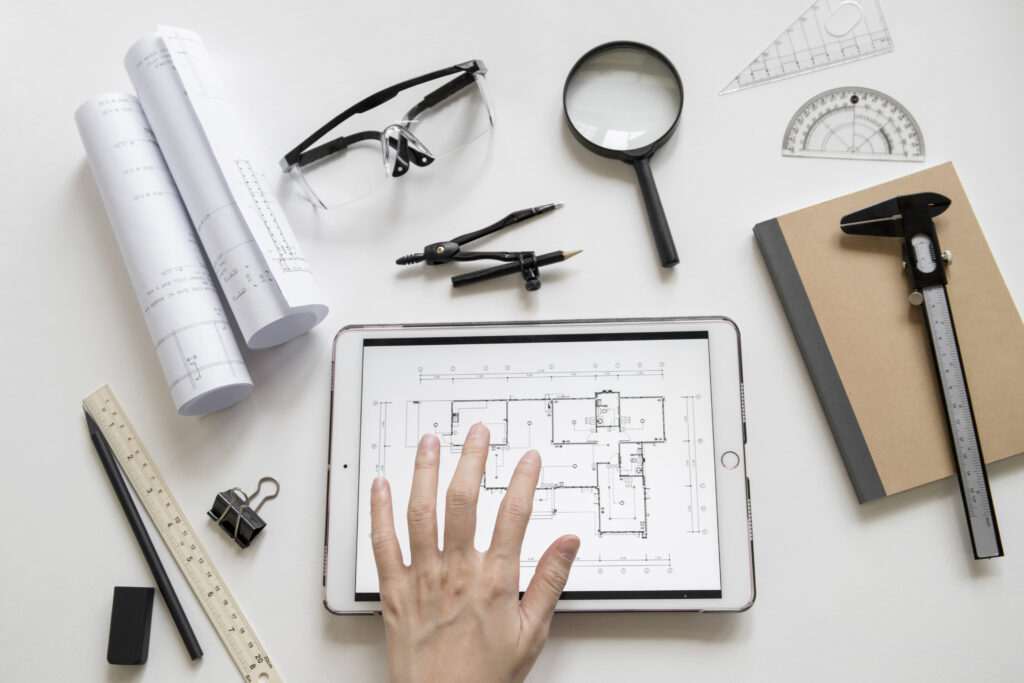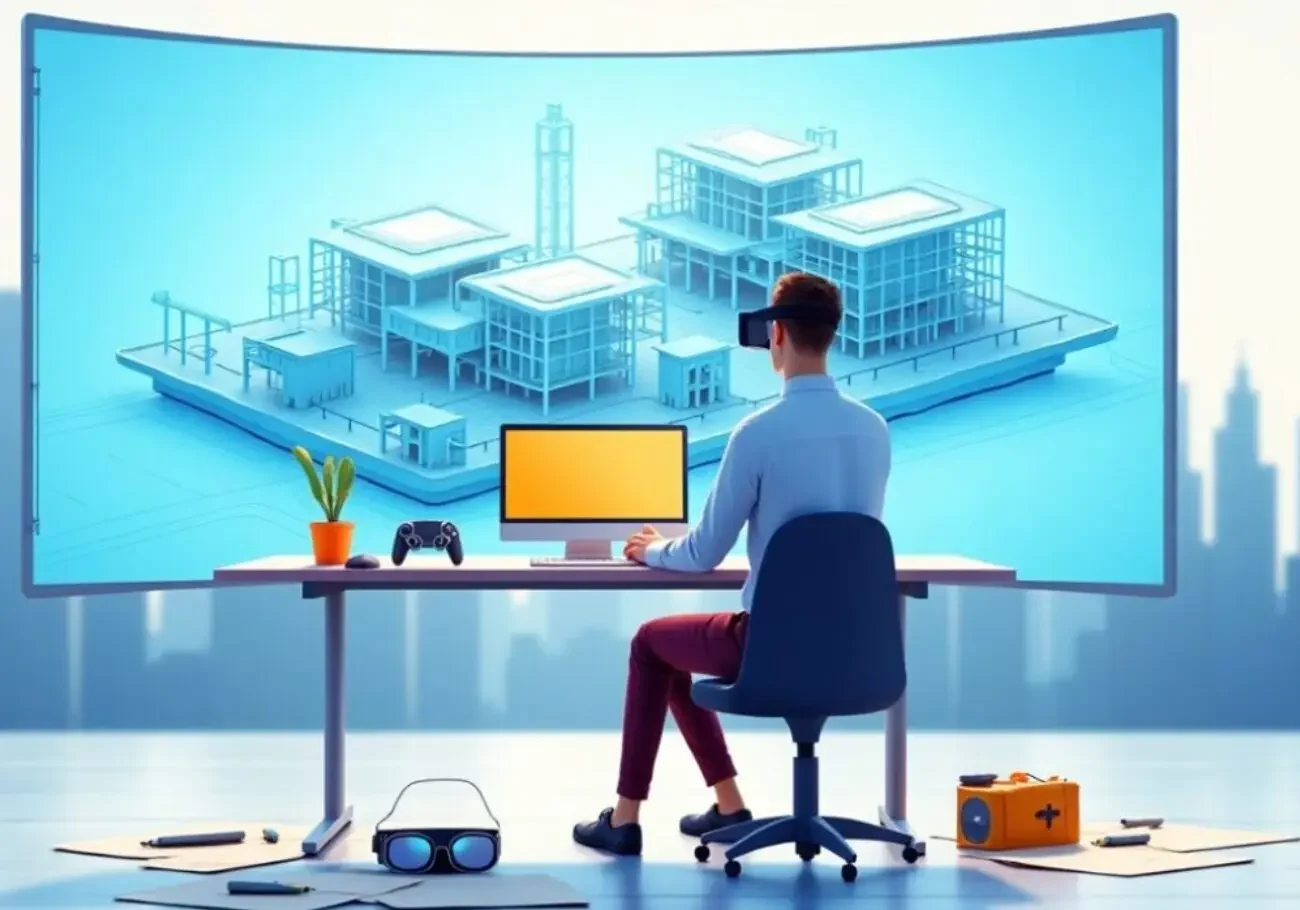Virtual Design and Construction (VDC) is a transformative methodology in the Architecture, Engineering, and Construction (AEC) industry that enables the creation, management, and optimization of construction projects using digital models and simulations. By integrating various technological tools such as Building Information Modeling (BIM), real-time data collection, and advanced project management software, VDC enables stakeholders to plan, visualize, and execute construction projects more efficiently and accurately.
This blog post delves into the technical aspects of VDC, outlining its key components, benefits, challenges, and the future of this digital transformation in the AEC industry.
What is Virtual Design and Construction (VDC)?

Virtual Design and Construction (VDC) is a comprehensive approach that integrates a wide array of digital technologies to design, simulate, and manage the construction process. The core of VDC lies in creating a digital twin of the construction project, representing every aspect of the project’s lifecycle, from concept and design to execution and operation.
VDC goes beyond traditional 3D modelling with Building Information Modeling (BIM) by integrating time (4D), cost (5D), and real-time data (6D) into a unified, dynamic environment. This approach allows construction teams to assess the entire project at various stages, visualize potential challenges, and make informed decisions, minimizing risk and ensuring efficiency.
Key Components of Virtual Design and Construction
To understand VDC fully, it’s crucial to break down its key components, each contributing to a comprehensive, integrated process:
- Building Information Modeling (BIM): BIM serves as the foundation for VDC by providing a detailed digital model that represents the physical and functional aspects of a building or infrastructure. Through BIM, stakeholders can visualize a 3D representation of the project, enabling better collaboration and coordination across teams.
- 4D BIM: 4D BIM integrates time into the BIM model, allowing construction teams to visualize the project’s timeline. This enables scheduling simulations, ensuring that the project progresses efficiently and that potential delays can be identified and mitigated in advance.
- 5D BIM: Extending BIM to include cost data, 5D BIM enables teams to predict and manage project costs more effectively. It combines the project’s digital model with real-time cost estimation, allowing stakeholders to identify cost overruns early in the process.
- Construction Simulation: This aspect of VDC involves simulating various construction scenarios to assess the impact of different variables (such as labour, materials, or unforeseen events) on the project timeline and budget. These simulations help reduce uncertainties and optimize the construction process.
- Real-Time Data Integration (6D BIM): Incorporating data from sensors, IoT devices, drones, and other real-time sources into the virtual model allows for live tracking of project progress. This integration offers an up-to-the-minute understanding of the construction site, enabling proactive management and decision-making.
- Collaborative Cloud Platforms: Cloud-based tools like Autodesk BIM 360 or Procore facilitate seamless collaboration among project stakeholders. These platforms provide real-time updates, centralizing project information and ensuring that everyone is working from the latest model and data.
Benefits of Virtual Design and Construction
VDC offers numerous benefits that significantly enhance construction project efficiency, collaboration, and outcomes. Below is a more technical breakdown of the advantages:
Benefit | Description |
Improved Collaboration | VDC fosters a collaborative environment by allowing all stakeholders to work on a single, updated digital model. It reduces communication errors and ensures all parties are aligned with the project goals. |
Enhanced Visualization | Virtual models offer an unparalleled level of detail, enabling stakeholders to understand the project in its entirety. This leads to better decision-making and a reduction in errors caused by misinterpretations. |
Cost and Time Savings | By detecting design flaws and scheduling conflicts early, VDC helps save time and costs. Early issue resolution prevents costly mistakes and delays during construction. |
Risk Mitigation | VDC’s simulation capabilities allow teams to test various construction scenarios, reducing the likelihood of unforeseen problems during construction. |
Resource Optimization | The virtual model allows project managers to optimize the use of labor, materials, and equipment, reducing waste and improving project efficiency. |
Higher Precision | With the ability to detect and correct errors before construction begins, VDC ensures higher levels of accuracy and precision throughout the project lifecycle. |
How Virtual Design and Construction is Transforming the AEC Industry
The AEC industry, historically plagued with inefficiencies and frequent cost overruns, is experiencing a paradigm shift thanks to the implementation of VDC. Here’s how VDC is driving this transformation:
- Streamlined Communication and Collaboration: Traditional construction projects often suffer from communication gaps between different teams. VDC eliminates this by providing a shared platform where architects, engineers, contractors, and owners can access the same digital model, ensuring everyone is on the same page and can collaborate effectively.
- Enhanced Project Planning and Scheduling: With 4D BIM and construction simulations, VDC enables precise scheduling, helping teams predict project timelines more accurately. This capability reduces the chances of delays and ensures better utilization of resources over the course of the project.
- Proactive Risk Management: VDC’s ability to simulate real-world scenarios allows for proactive risk management. Construction managers can assess potential problems such as design flaws, material shortages, or scheduling conflicts before they occur, enabling them to devise solutions and reduce the risk of costly errors.
- Increased Sustainability: VDC encourages more sustainable practices by optimizing resource usage, minimizing waste, and improving energy efficiency. It allows for better building designs that reduce the overall environmental impact of a construction project.
Tools and Technologies Used in Virtual Design and Construction

VDC relies on an array of advanced technologies, each playing a pivotal role in its success. Here are some of the primary tools and technologies used:
- Building Information Modeling (BIM): BIM forms the heart of VDC, offering detailed digital representations of projects and serving as the foundation for the entire construction lifecycle.
- Virtual Reality (VR) and Augmented Reality (AR): VR and AR allow stakeholders to virtually explore and interact with the project before construction begins, providing deeper insights into design elements and potential challenges
. - IoT and Sensors: IoT devices such as sensors embedded on-site collect real-time data, which is integrated into the digital model, providing construction teams with up-to-date information about site conditions, equipment status, and environmental factors.
- Drones: Drones are used to capture aerial views and scan construction sites, enabling accurate site mapping and monitoring progress in real-time.|
- Robotics: Robots and automated machinery are becoming increasingly common in construction, assisting with tasks such as bricklaying or material handling, which helps speed up construction and reduce human error.
Challenges and Solutions in Virtual Design and Construction
While the benefits of VDC are clear, its implementation is not without challenges. Some of the most significant Challenges in VDC are as follows:
- High Initial Investment: The upfront cost of acquiring VDC tools and technologies can be prohibitive, especially for smaller firms. However, long-term cost savings from improved efficiency and reduced errors often outweigh the initial investment.
- Skills Gap: The adoption of VDC requires a workforce skilled in using digital tools such as BIM, 4D modeling, and VR. To address this, companies must invest in training and certification programs to upskill their teams.
- Data Overload: The integration of vast amounts of data from different sources (e.g., sensors, drones, BIM) can overwhelm project teams if not properly managed. Implementing robust data management systems and platforms is essential to avoid information overload and ensure the data is actionable.
Resistance to Change: Many construction professionals are hesitant to embrace new technologies due to their reliance on traditional methods. Overcoming this resistance requires educating teams on the advantages of VDC and demonstrating its value through pilot projects.
Future Trends in Virtual Design and Construction
As VDC continues to evolve, several key trends are expected to shape its future:
- Artificial Intelligence (AI) and Machine Learning: AI algorithms will enable more advanced predictive analytics, improving construction scheduling, project management, and resource allocation.
- Integration with Blockchain: Blockchain technology could be integrated into VDC platforms for better tracking of project data, ensuring transparency, and reducing fraud.
- Increased Automation: The construction industry is likely to see further automation with the rise of robotics, autonomous vehicles, and drone technology, streamlining various tasks across the construction lifecycle.
- Sustainability and Green Construction: VDC will continue to push for sustainable practices by optimizing designs that are energy-efficient, reduce waste, and enhance environmental responsibility.
FAQs About Virtual Design and Construction
What does Virtual Design and Construction do?
VDC creates a digital representation of a construction project, integrating design, scheduling, costs, and real-time data to optimize the entire project lifecycle.
What is the difference between VDC and BIM?
While BIM serves as the foundation for VDC, VDC includes additional tools such as 4D/5D BIM, construction simulation, and real-time data integration, enabling full project lifecycle management.
What challenges exist in implementing Virtual Design and Construction?
Challenges include high initial investment, a skills gap among construction professionals, data management complexities, and resistance to adopting new technologies.
Conclusion: Why Virtual Design and Construction Matters for Modern Projects
Virtual Design and Construction (VDC) represents a pivotal shift in the construction industry, offering unparalleled opportunities for efficiency, collaboration, and risk management.
As construction projects become more complex, VDC will continue to evolve and play a critical role in shaping the future of the industry. By adopting VDC technologies, companies can ensure more successful, cost-effective, and sustainable projects.
